
The image of players wearing "shorts and numbered shirts” is very familiar at the football tournaments. At Khai Ha festival in Khang Vat hamlet, Thuong Coc commune, Lac Son district, the fans, tourists and people witnessed a unique image when the Organizing Committee issued a regulation: the female participants must wear Muong skirts.
This special women's football tournament was filled with vibrant sounds and laughter. Although there were some inconveniences in moving and running after the rolling ball, from the beginning to the end of the match, there were many humorous and attractive situations, and many fierce ball fights that were no less than the professional players.
Included in the traditional festivals by some hamlets and communes in the Muong Vang - Lac Son region, this unique cultural and sporting activity does not focus on the professional quality but rather on the spiritual values and honoring the national cultural identity.
The players must wear Muong ethnic costumes according to tournament regulations.
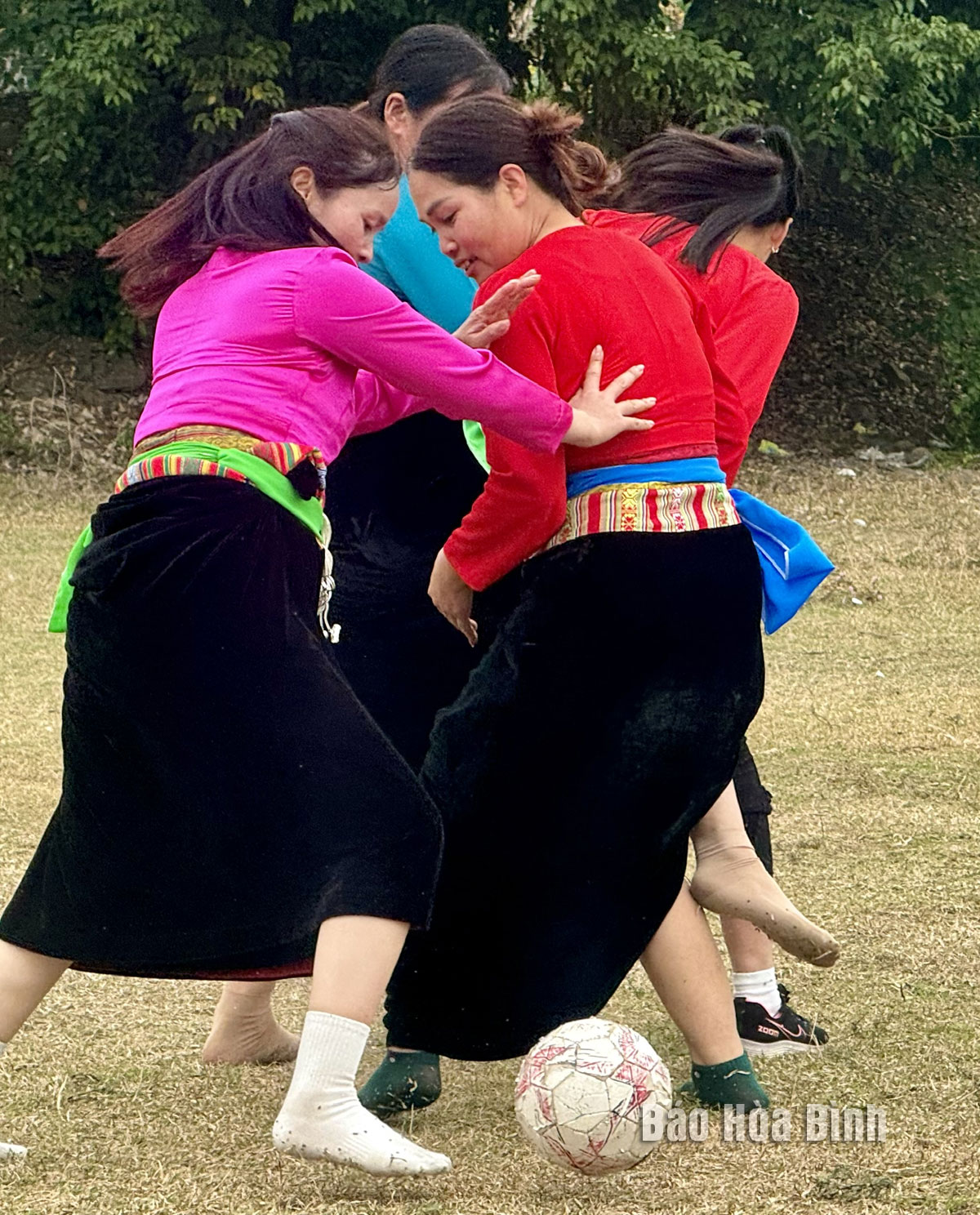 However, the spirit of the competition is important.
However, the spirit of the competition is important.
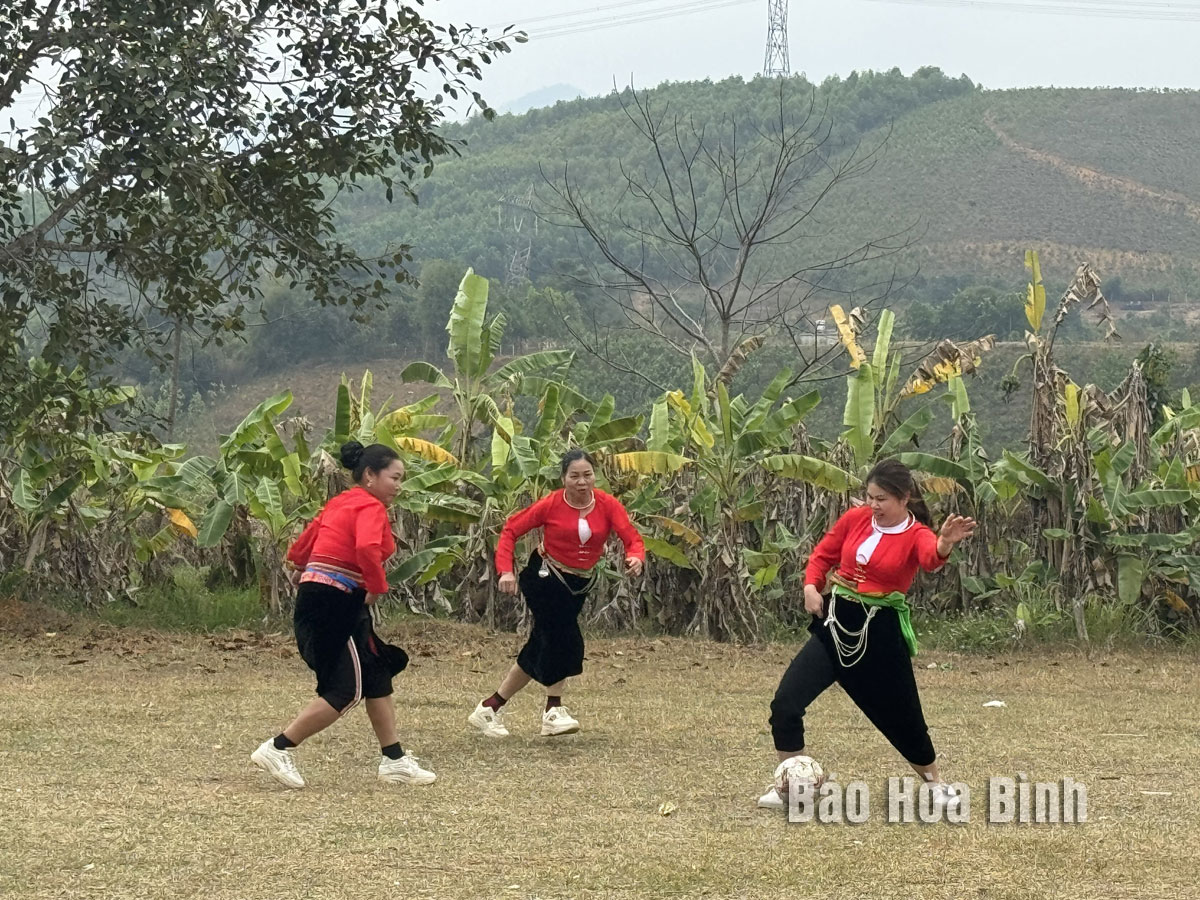 The female player's ball-juggling.
The female player's ball-juggling.
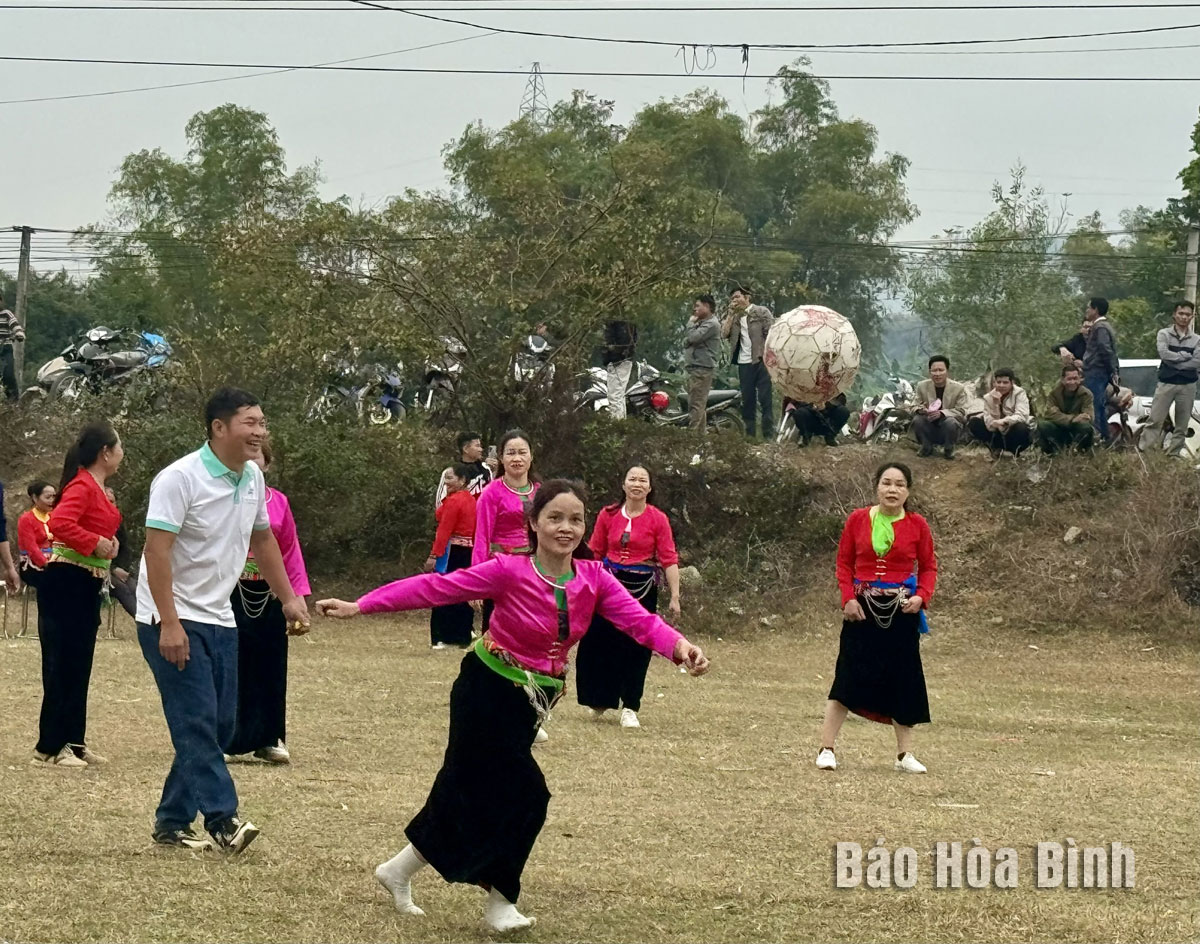 The ball-building phases are no less professional.
The ball-building phases are no less professional.
Sometimes because of the excitement, the audience also enters the field to dribble the ball with the girls.
The ethnic costumes stand out on the field.
The ball-fighting phase has "lines” of the female center-back in the midfield area.
Some funny situations of the female players made the atmosphere more exciting:
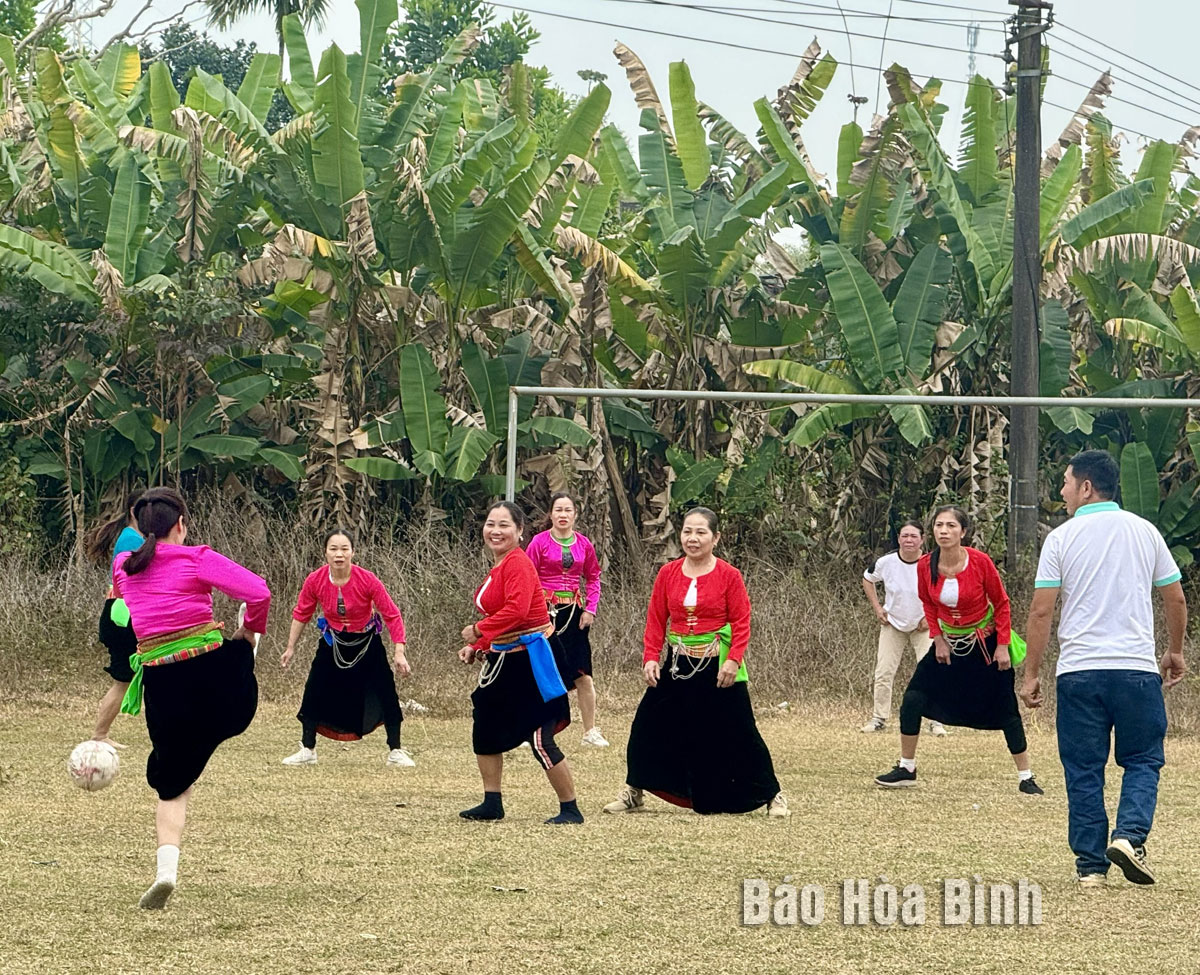 The player raises his leg to kick but the ball misses the goal
The player raises his leg to kick but the ball misses the goal
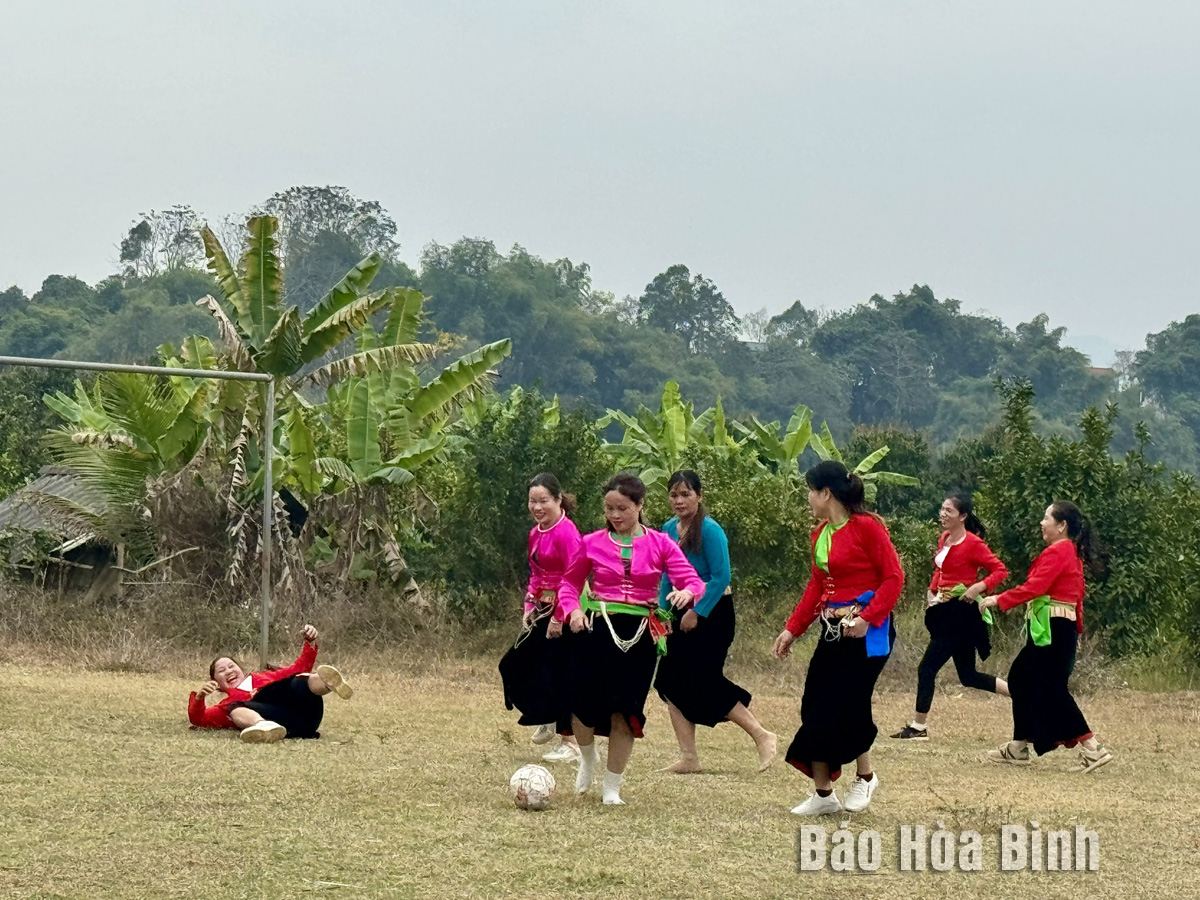 The goalkeeper falls down but luckily the ball does not go into the net.
The goalkeeper falls down but luckily the ball does not go into the net.
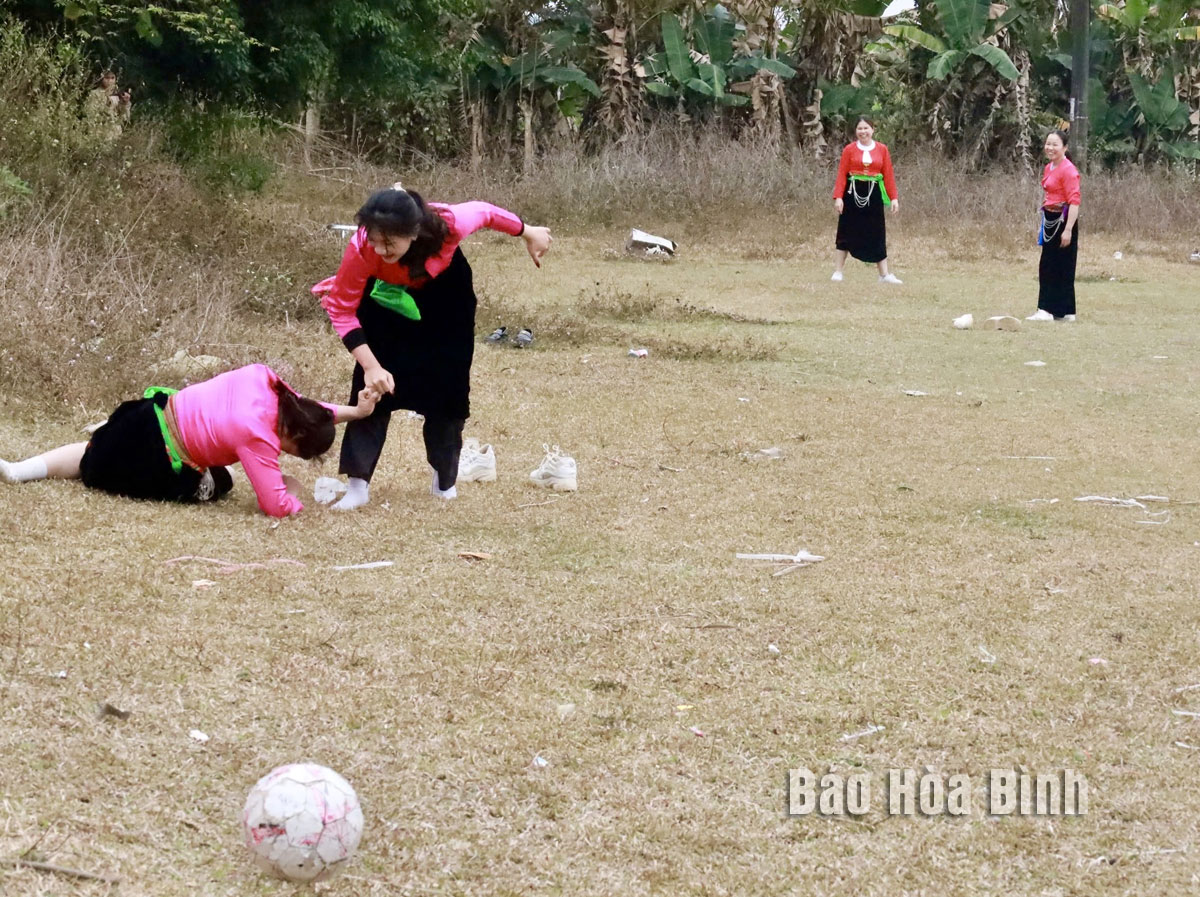 Due to some inconvenience, there are times when the women fall.
Due to some inconvenience, there are times when the women fall.
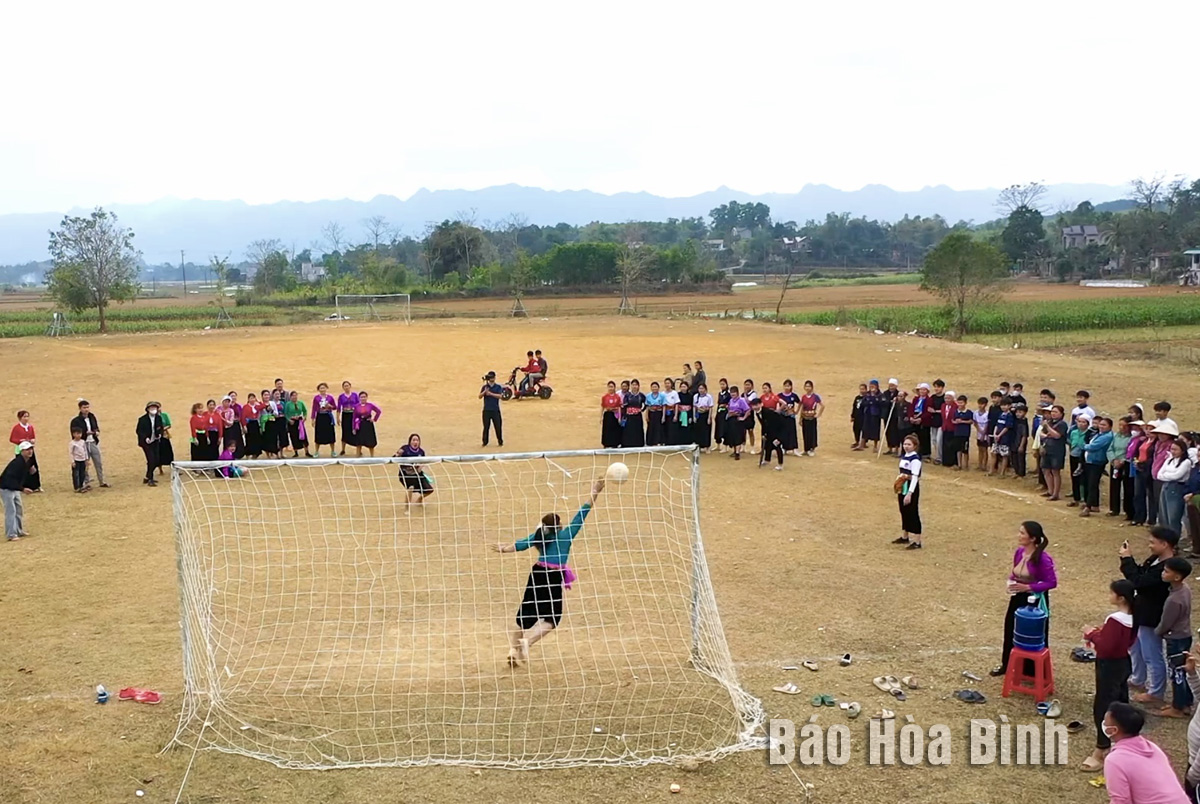 In another match, the football tournament, which has unique sports and culture, attracts the attention of many people.
In another match, the football tournament, which has unique sports and culture, attracts the attention of many people.
Nestled halfway up the mountains in Cao Son commune, Da Bac district, Sung village appears like a picture preserved intact through generations. With a history of over 300 years, the village is home to nearly 100 households of Dao Tien ethnic group – the people who still maintain their distinctive characteristics in housing architecture, clothing, customs and traditional crafts. The village is drawing increasing interest and exploration from both domestic and international tourists, as every visit becomes a cultural journey to experience the authenticity, friendliness, and hospitality of this highland region.
This Spring, more than 1,000 phoenix trees in Thang Hamlet, Thach Yen Commune (Cao Phong) have bloomed brilliantly, quickly spreading on social media. The picturesque beauty of the flower garden has attracted the participation of many people to admire and take photos.
This belief is both a guiding principle and a lifelong ambition for Sa Van Cam, a member of the Tay ethnic group in Da Bac district and a passionate advocate for the Tay culture. The native has devoted years to the revival, preservation, and teaching of the ancient Tay script.
Located just 25 km from Hoa Binh city and approximately 100km from Hanoi, with a journey of around 1 hour 45 minutes, Ngoi Hoa ecotourism site (PriorBay Resort) in Suoi Hoa commune, Tan Lac district, is a stunning peninsula retreat, and a standout destination within the Hoa Binh Reservoir tourism area. Officially opening in February this year, the resort captivates visitors with its distinctive vacation products and a range of exciting adventure experiences.
Over 1,500 women paraded in traditional ao dai (long dress) at Hoa Binh Square on March 5 to mark Ao Dai Week 2025 launched by the Vietnam Women's Union. Organised by the provincial Women’s Union in collaboration with the city’s chapter, the annual event features lively folk dance performances and a colorful parade that celebrated the beauty of Vietnam’s traditional dress and its rich cultural heritage.
With skillful and meticulous craftsmanship, H’Mong women in Pa Co Commune, Mai Chau district carefully carry out dozens of manual steps to weave skirts, bags, scarves… with vibrant colors. They continue to preserve the traditional brocade weaving, transforming these products into tourism goods while also promoting the H’Mong people's unique cultural beauty.




 However, the spirit of the competition is important.
However, the spirit of the competition is important. The female player's ball-juggling.
The female player's ball-juggling. The ball-building phases are no less professional.
The ball-building phases are no less professional.

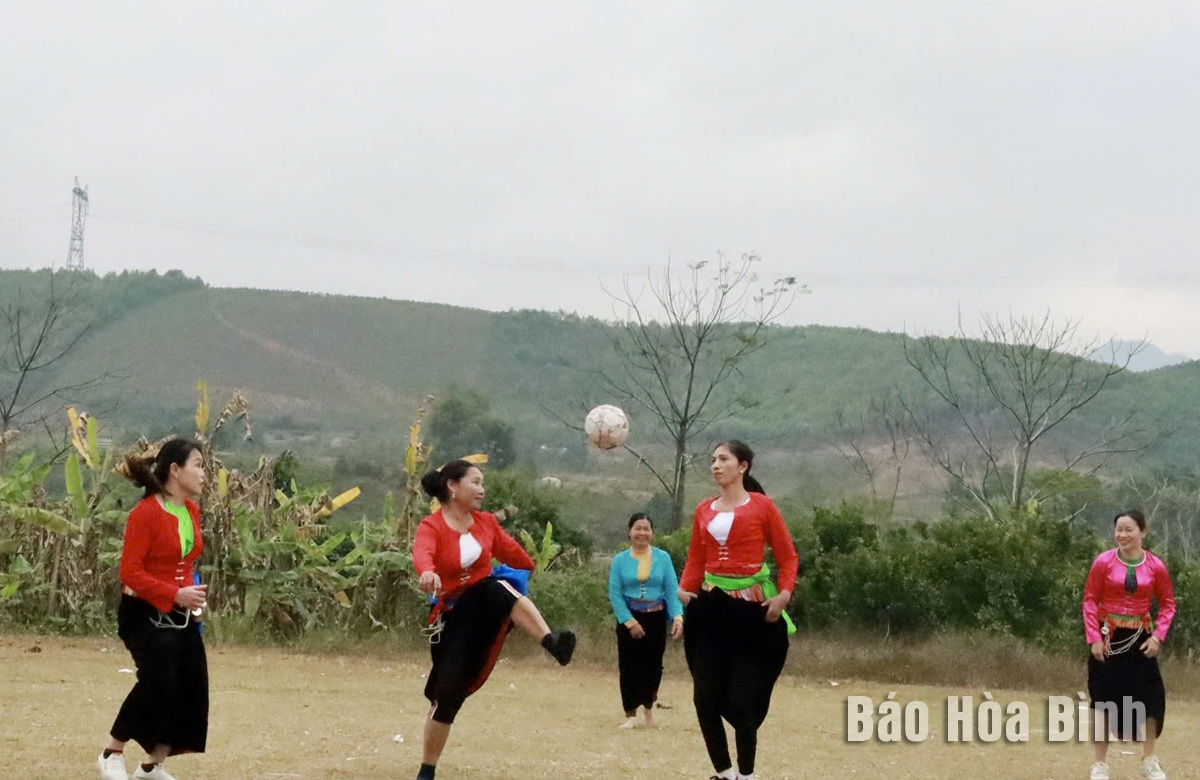
 The player raises his leg to kick but the ball misses the goal
The player raises his leg to kick but the ball misses the goal The goalkeeper falls down but luckily the ball does not go into the net.
The goalkeeper falls down but luckily the ball does not go into the net. Due to some inconvenience, there are times when the women fall.
Due to some inconvenience, there are times when the women fall. In another match, the football tournament, which has unique sports and culture, attracts the attention of many people.
In another match, the football tournament, which has unique sports and culture, attracts the attention of many people.